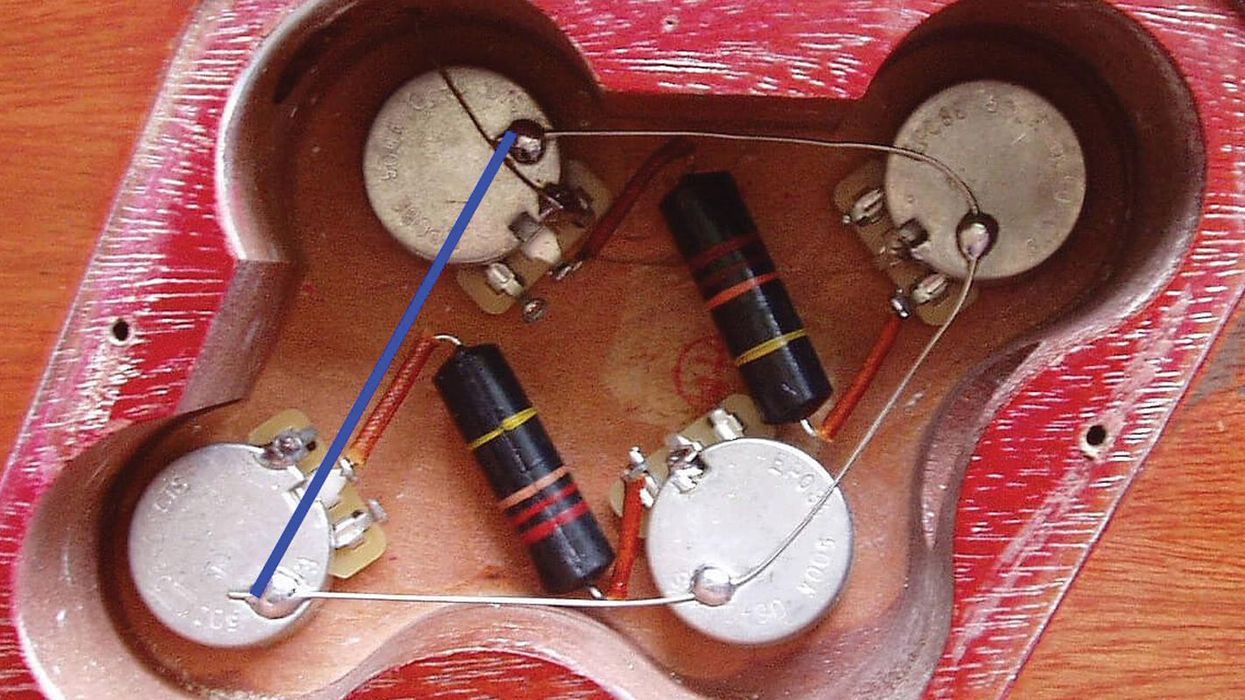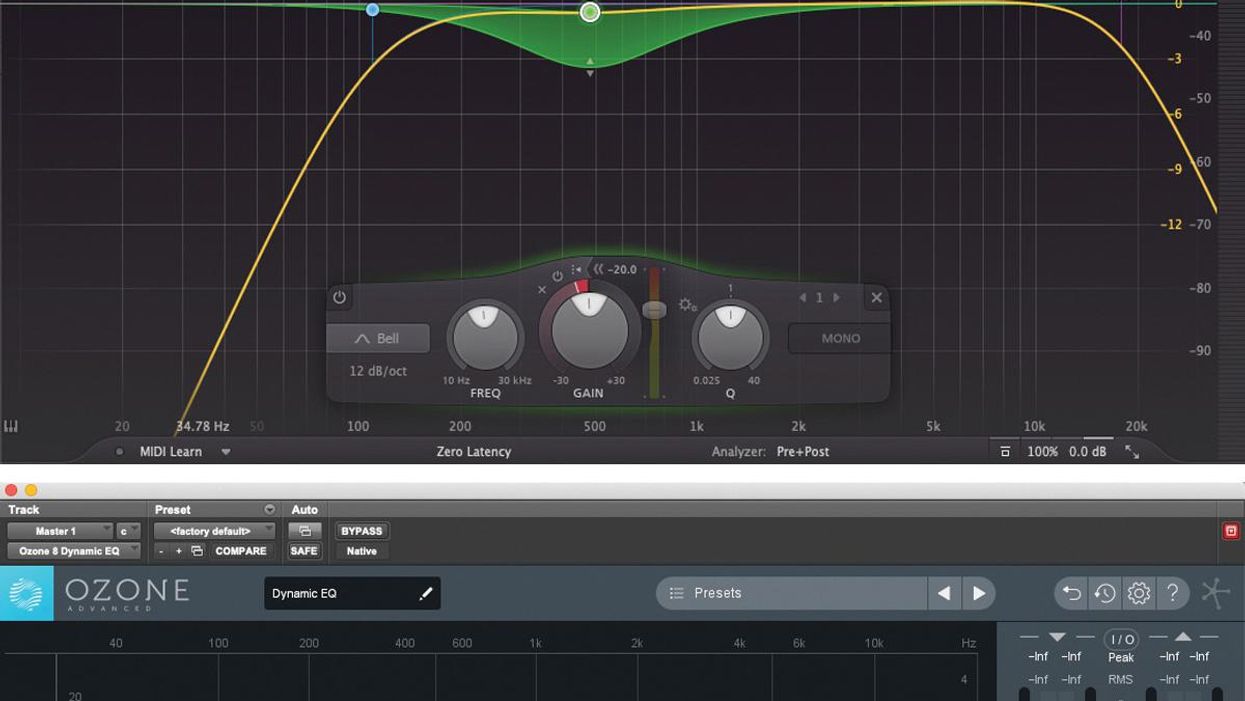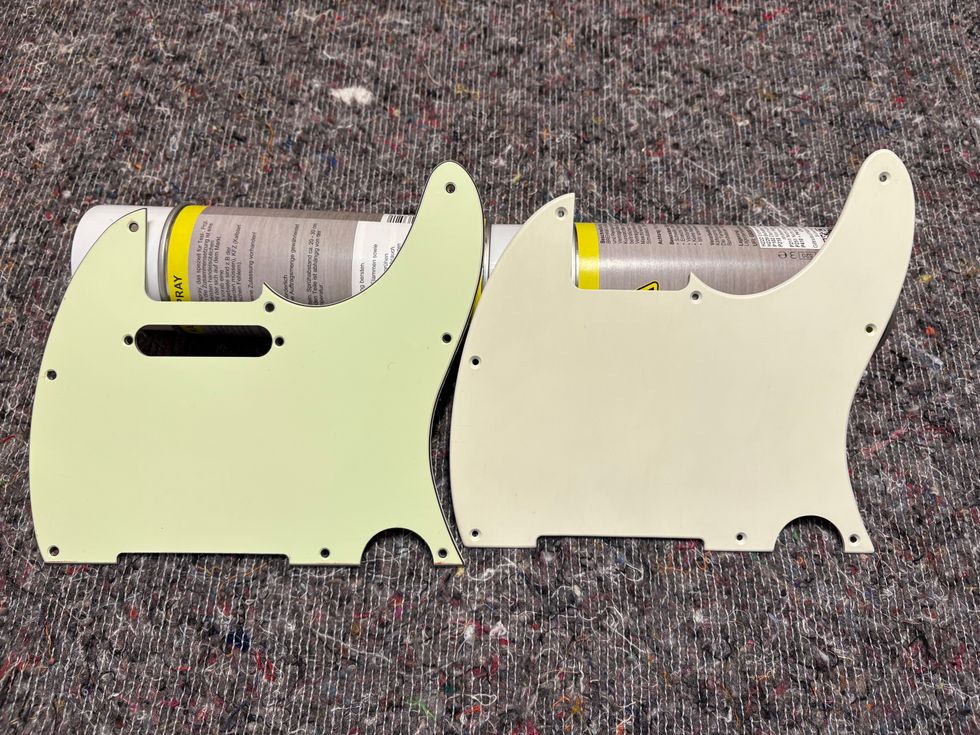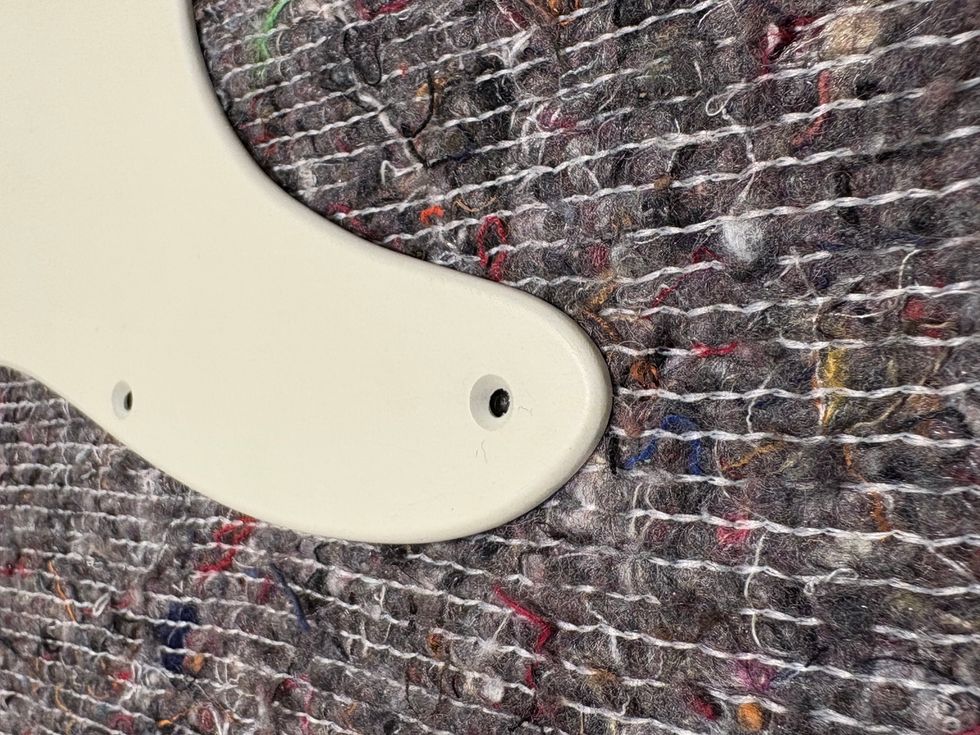As a guitarist, I’ve been complimented
more for being tasteful
than I ever have for being speedy.
Yet deep down in my psyche, I
don’t always feel like I’ve really
done anything worth listening to
unless it was some intense riff that
sounded ridiculously impossible
and made every head in the room
turn and mouths hang open. I
always preach to students, up-and-comers,
and fans that it’s not about
being flashy, but being tasteful. Yet,
I think it’s those wacko, out-there,
speed-demon riffs that attracted
most of us to be lead players in the
first place. For us, if music were just
about playing a solid, groovin’ part,
we’d all be bass players!
It’s well and fine to have a bag of tricky, fast licks that will impress other guitarists (and, of course, the ladies), but it’s a whole other deal to use that flash and technique while playing something people actually want to hear. When I listen to vintage Toto, Steve Lukather shows he knows how to blend undeniably impressive chops with tasteful melodies and rich tone. Music lovers don’t really know or care how difficult the solo they just heard was to play or how many hours it took to perfect. If they can feel it and it moves them, you’ve hit your bull’s-eye!
In order to make your living as a musician, you don’t always have the luxury to pick and choose the quality of the project that’s going to pay your bills each month. I’ve been hired to cut demos of a lot of bad songs over the years, but I still managed to turn them into something listenable by laying down a groove and playing solid, tasteful solos. That’s really the foundation behind what we do. All of the flashy “soundcheck licks” or “NAMM chops” (as I’ve heard them referred to) are fine exercises to help develop your skills, but when it’s go-time, the refined, more musical parts always work best.
When you think of some of the great guitar music out there, you’re going to find a solid song with a catchy hook. The golden guitar era of the ’70s was full of them. The Doobie Brothers made a career out of playing songs with catchy guitar hooks like “Listen to the Music,” “Long Train Runnin’,” and “China Grove.” When founding Doobie Tom Johnson described writing those songs, he said the riffs would come first and the lyrics were secondary. The opening to the song pulls you in and makes you want to hear where it’s going to go.
Another great example is Fleetwood Mac guitarist Lindsey Buckingham. Although he’s mostly known for his vocals, he has the ability to lay down a guitar part that becomes an essential piece of the song, and his solos aren’t just an extended jam over the chord changes. There’s a true talent to being able to play a melodic phrase that is so identifiable, it merges with the arrangement.
When soloing, it’s good to think melodically and lay down something that compliments the song and makes sense within the structure of the changes. A guitar solo is a mini concerto within the bigger context of the song, and not simply a chance to show the world what you may be capable of pulling out of your fretboard.
You should be thinking, “What line would fit best and can I sing it?” A solo should take you somewhere. It should start where the melody left off and wrap up where the song is going next. Really, it’s a way to segue between musical sections, and an important building block in the song’s emotional structure. Also, you should always play every note like it counts. Kurt Cobain’s solo in “Smells Like Teen Spirit” isn’t difficult to play, but it fits all the major criteria of a great solo: It has energy, it’s melodic, and it fits well in the context of the song.
One of my favorite guitar solos of all time is Rick Derringer’s assault on “Rock and Roll Hoochie Koo.” Beginning high above the 12th fret, he hits you square in the face with an earsplitting, two-measure pentatonic marvel. Then he lets it breathe for a moment before repeating the line and embellishing it on the second pass. The solo clearly shows off his superior ability on the fretboard, but more importantly, it illustrates his sense of melody and drama.
It’s essential to let the song guide you stylistically and creatively. To me, there’s nothing more irritating than listening to a guitarist who’s main purpose is to show you how fast or even how “outside” he can play while ignoring what the song itself is expressing.
Well, to quote Rob Reiner playing rockumentary director Marty DiBergi in This Is Spinal Tap, “Enough of my yakkin’.” Next time you pick up your axe, think melodically and play your next gig with good taste in mind. But most of all, keep jammin’!
 Rich Eckhardt is a
Nashville guitarist who has
performed with singers
ranging from Steven Tyler
to Shania Twain. He currently
plays lead guitar for
Toby Keith, and also works
as a spokesperson for the Soles4Souls
charity (soles4souls.org). His new album,
Cottage City Firehouse, is available at
richeckhardt.com and CDBaby.com.
Rich Eckhardt is a
Nashville guitarist who has
performed with singers
ranging from Steven Tyler
to Shania Twain. He currently
plays lead guitar for
Toby Keith, and also works
as a spokesperson for the Soles4Souls
charity (soles4souls.org). His new album,
Cottage City Firehouse, is available at
richeckhardt.com and CDBaby.com.
It’s well and fine to have a bag of tricky, fast licks that will impress other guitarists (and, of course, the ladies), but it’s a whole other deal to use that flash and technique while playing something people actually want to hear. When I listen to vintage Toto, Steve Lukather shows he knows how to blend undeniably impressive chops with tasteful melodies and rich tone. Music lovers don’t really know or care how difficult the solo they just heard was to play or how many hours it took to perfect. If they can feel it and it moves them, you’ve hit your bull’s-eye!
In order to make your living as a musician, you don’t always have the luxury to pick and choose the quality of the project that’s going to pay your bills each month. I’ve been hired to cut demos of a lot of bad songs over the years, but I still managed to turn them into something listenable by laying down a groove and playing solid, tasteful solos. That’s really the foundation behind what we do. All of the flashy “soundcheck licks” or “NAMM chops” (as I’ve heard them referred to) are fine exercises to help develop your skills, but when it’s go-time, the refined, more musical parts always work best.
When you think of some of the great guitar music out there, you’re going to find a solid song with a catchy hook. The golden guitar era of the ’70s was full of them. The Doobie Brothers made a career out of playing songs with catchy guitar hooks like “Listen to the Music,” “Long Train Runnin’,” and “China Grove.” When founding Doobie Tom Johnson described writing those songs, he said the riffs would come first and the lyrics were secondary. The opening to the song pulls you in and makes you want to hear where it’s going to go.
Another great example is Fleetwood Mac guitarist Lindsey Buckingham. Although he’s mostly known for his vocals, he has the ability to lay down a guitar part that becomes an essential piece of the song, and his solos aren’t just an extended jam over the chord changes. There’s a true talent to being able to play a melodic phrase that is so identifiable, it merges with the arrangement.
When soloing, it’s good to think melodically and lay down something that compliments the song and makes sense within the structure of the changes. A guitar solo is a mini concerto within the bigger context of the song, and not simply a chance to show the world what you may be capable of pulling out of your fretboard.
You should be thinking, “What line would fit best and can I sing it?” A solo should take you somewhere. It should start where the melody left off and wrap up where the song is going next. Really, it’s a way to segue between musical sections, and an important building block in the song’s emotional structure. Also, you should always play every note like it counts. Kurt Cobain’s solo in “Smells Like Teen Spirit” isn’t difficult to play, but it fits all the major criteria of a great solo: It has energy, it’s melodic, and it fits well in the context of the song.
One of my favorite guitar solos of all time is Rick Derringer’s assault on “Rock and Roll Hoochie Koo.” Beginning high above the 12th fret, he hits you square in the face with an earsplitting, two-measure pentatonic marvel. Then he lets it breathe for a moment before repeating the line and embellishing it on the second pass. The solo clearly shows off his superior ability on the fretboard, but more importantly, it illustrates his sense of melody and drama.
It’s essential to let the song guide you stylistically and creatively. To me, there’s nothing more irritating than listening to a guitarist who’s main purpose is to show you how fast or even how “outside” he can play while ignoring what the song itself is expressing.
Well, to quote Rob Reiner playing rockumentary director Marty DiBergi in This Is Spinal Tap, “Enough of my yakkin’.” Next time you pick up your axe, think melodically and play your next gig with good taste in mind. But most of all, keep jammin’!
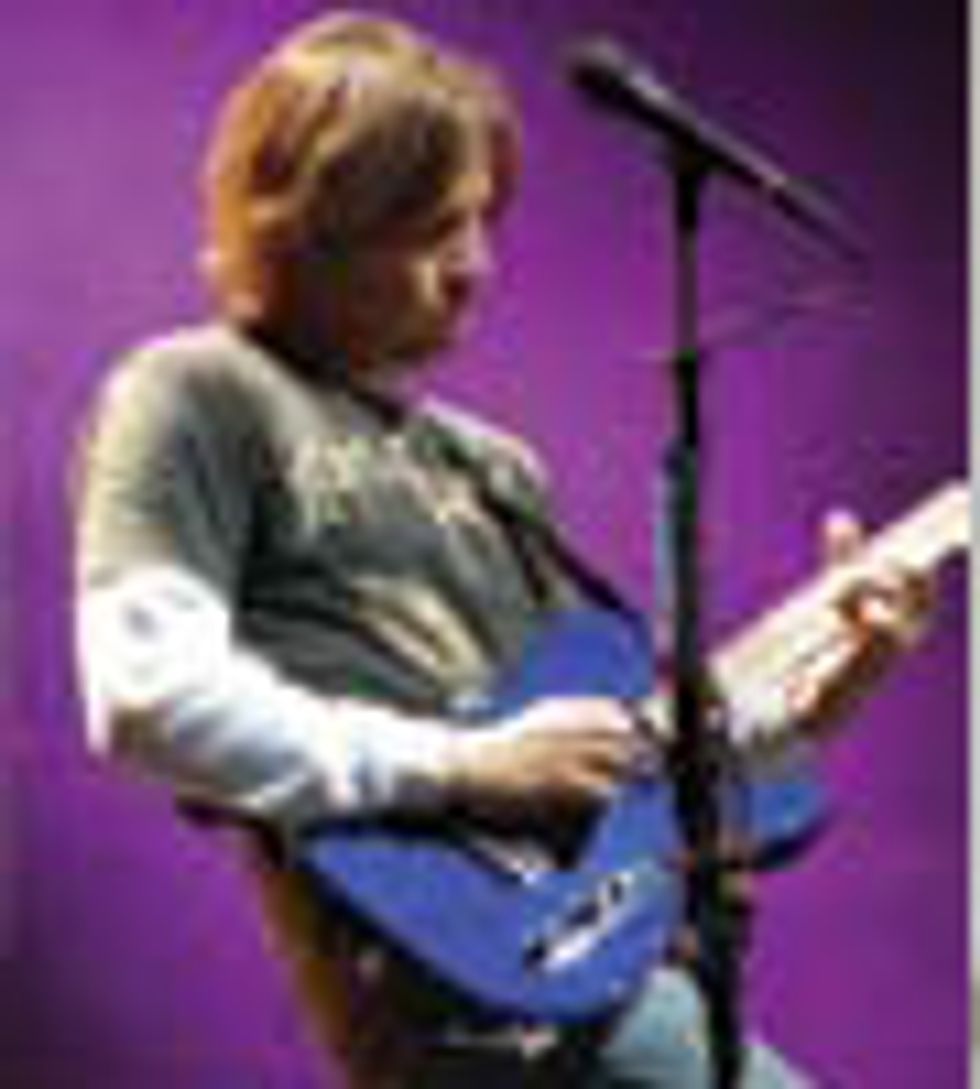 Rich Eckhardt is a
Nashville guitarist who has
performed with singers
ranging from Steven Tyler
to Shania Twain. He currently
plays lead guitar for
Toby Keith, and also works
as a spokesperson for the Soles4Souls
charity (soles4souls.org). His new album,
Cottage City Firehouse, is available at
richeckhardt.com and CDBaby.com.
Rich Eckhardt is a
Nashville guitarist who has
performed with singers
ranging from Steven Tyler
to Shania Twain. He currently
plays lead guitar for
Toby Keith, and also works
as a spokesperson for the Soles4Souls
charity (soles4souls.org). His new album,
Cottage City Firehouse, is available at
richeckhardt.com and CDBaby.com.




